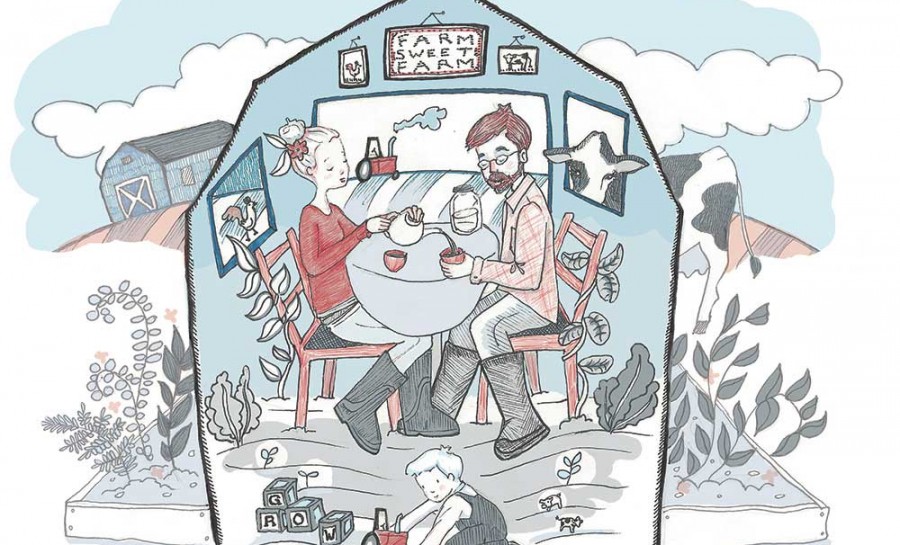At Home, on the Land
Finding the Next Generation of Farmhouses
By Julie Schwietert Collazo | Illustration by Kaitlin Van Pelt, Photos by Francisco Collazo | Spring 2015 | Features
Farming has always been big business Upstate, not just as part of our livelihood but as part of our identity. In 2012, agriculture in the Hudson Valley was a $4 billion business, occupying 17 percent of the region’s land. While the outlook for American farming is a bit bleak according to the US Environmental Protection Agency, which reports that the country has lost nearly four million farms in the past 80 years, the industry here is still thriving, with more women and younger people taking to the fields.
The stories of how these next-generation farmers are drawn to work the land and tend livestock are diverse. There are single people, couples, and families who have dabbled in urban farming or finance and opted for a career change, and those that come straight out of school, heading for the fields.
Despite the many hardships of farm life—the hard labor, the patience it requires, the delayed financial gratification, and the omnipotent force of weather—these newcomers are committed to the long haul when it comes to making their living off the land. Not only do they want their lives to have a more focused purpose, but they also want others to benefit from the literal fruits of their labors.
They do so in an increasingly complex farming landscape, one in which environmental uncertainties—climate change chief among them—present more challenges with each passing year. In addition, foodshed-conscious consumers demand more of farmers than ever before. They want to know if their prospective purchases are organic, local, sustainable, and ethical, subjecting farmers to a rigorous checklist of criteria. It’s not the easy life, they agree, but it’s one that brings both joy and satisfaction.
